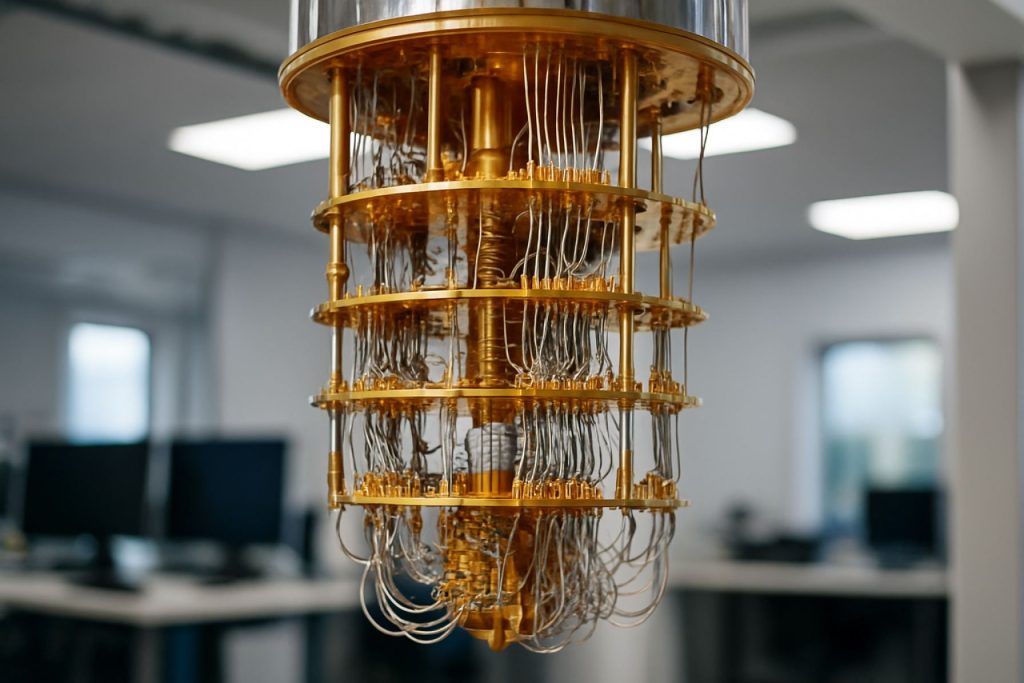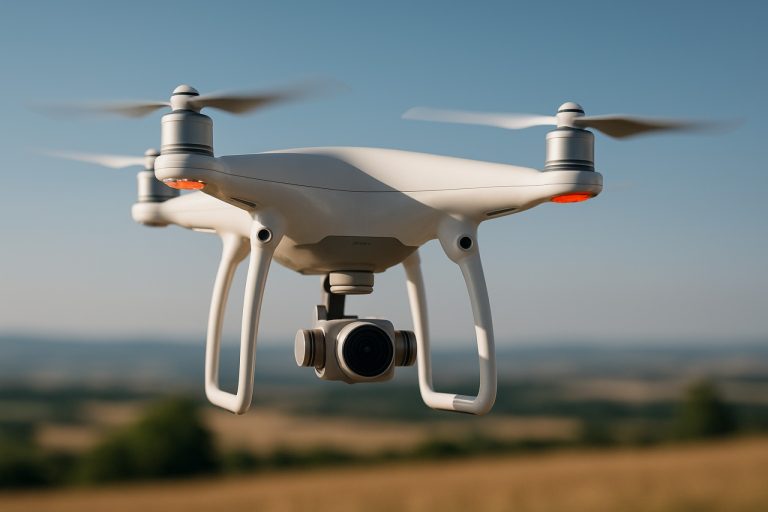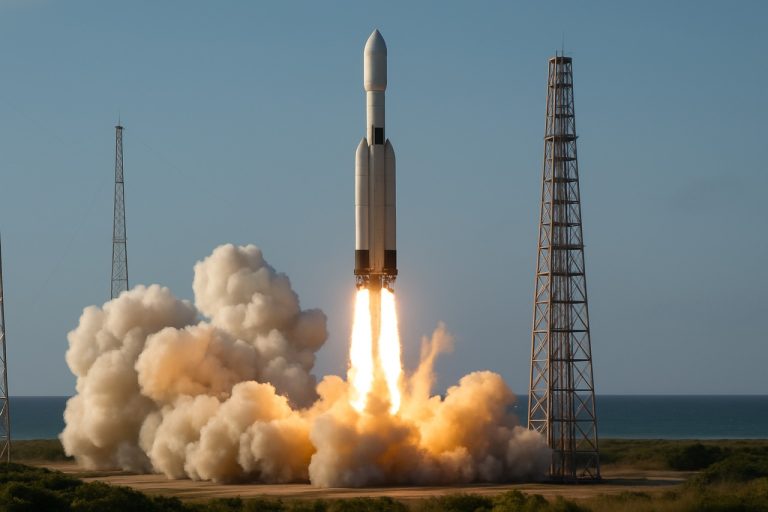
Unlocking the Power of Quantum Annealing Systems: How This Revolutionary Technology Is Transforming Complex Computation and Redefining the Future of Optimization
- Introduction to Quantum Annealing: Principles and Origins
- How Quantum Annealing Systems Work: Core Mechanisms Explained
- Key Applications: From Logistics to Drug Discovery
- Comparing Quantum Annealing to Other Quantum Computing Models
- Current Industry Leaders and Notable Technologies
- Challenges and Limitations Facing Quantum Annealing
- Recent Breakthroughs and Research Developments
- Future Prospects: Scaling, Commercialization, and Societal Impact
- Sources & References
Introduction to Quantum Annealing: Principles and Origins
Quantum annealing is a computational paradigm designed to solve complex optimization problems by leveraging quantum mechanical phenomena, particularly quantum tunneling and superposition. Unlike classical annealing, which relies on thermal fluctuations to escape local minima, quantum annealing exploits quantum fluctuations to traverse energy landscapes more efficiently. The foundational principle involves encoding a problem into a Hamiltonian whose ground state corresponds to the optimal solution. The system is initialized in the ground state of a simple Hamiltonian and then gradually evolved toward the problem Hamiltonian, ideally remaining in the ground state throughout the process—a concept known as adiabatic evolution.
The origins of quantum annealing trace back to the early 1990s, with theoretical proposals that quantum fluctuations could outperform thermal fluctuations in certain optimization contexts. The formalization of adiabatic quantum computation, closely related to quantum annealing, was articulated in the early 2000s, providing a rigorous framework for understanding the process. Quantum annealing systems have since been developed as specialized hardware, most notably by D-Wave Systems Inc., which introduced the first commercially available quantum annealers.
Quantum annealing is particularly well-suited for combinatorial optimization problems, such as those found in logistics, finance, and machine learning. Its practical implementation, however, faces challenges including decoherence, limited connectivity, and noise. Despite these hurdles, ongoing research and development continue to refine quantum annealing hardware and algorithms, with the aim of achieving quantum advantage for real-world applications. The field remains a vibrant intersection of quantum physics, computer science, and engineering, promising new computational capabilities beyond the reach of classical systems Nature.
How Quantum Annealing Systems Work: Core Mechanisms Explained
Quantum annealing systems operate by leveraging quantum mechanical phenomena to solve complex optimization problems. At their core, these systems encode a problem into a mathematical structure known as an Ising model or a quadratic unconstrained binary optimization (QUBO) problem. The system is initialized in a superposition of all possible states, representing all potential solutions simultaneously. Through a process called adiabatic evolution, the system’s Hamiltonian (energy landscape) is gradually transformed from an initial, easily prepared state to a final Hamiltonian that encodes the solution to the problem.
During this evolution, quantum annealing exploits two key quantum effects: superposition and quantum tunneling. Superposition allows the system to explore multiple solutions at once, while quantum tunneling enables it to traverse energy barriers that would trap classical systems in local minima. As the annealing schedule progresses, the influence of quantum fluctuations is slowly reduced, allowing the system to settle into the lowest energy state, which corresponds to the optimal or near-optimal solution of the encoded problem.
The physical implementation of quantum annealing often involves superconducting qubits, which are manipulated using precise control of magnetic fields and temperatures near absolute zero. Notably, systems such as those developed by D-Wave Systems Inc. have demonstrated the practical application of these mechanisms, providing programmable quantum annealers for real-world optimization tasks. The effectiveness of quantum annealing depends on factors such as problem mapping, annealing schedule, and noise management, all of which are active areas of research and development in the field of quantum computing Nature.
Key Applications: From Logistics to Drug Discovery
Quantum annealing systems have demonstrated significant potential across a diverse range of application domains, particularly where complex optimization problems are prevalent. In logistics, these systems are being explored to optimize vehicle routing, supply chain management, and scheduling, where the combinatorial nature of the problems often renders classical approaches inefficient. For example, companies like Volkswagen AG have partnered with quantum hardware providers to pilot quantum annealing for real-time traffic flow optimization, aiming to reduce congestion and improve urban mobility.
In the financial sector, quantum annealing is applied to portfolio optimization, risk analysis, and fraud detection. The ability to process vast datasets and identify optimal solutions rapidly offers a competitive edge, as demonstrated by collaborations between financial institutions and quantum technology firms such as JPMorgan Chase & Co..
Perhaps most notably, quantum annealing is making inroads into drug discovery and materials science. The pharmaceutical industry faces enormous challenges in molecular similarity searches, protein folding, and drug-target interaction predictions. Quantum annealing systems, such as those developed by D-Wave Systems Inc., are being used to accelerate these processes, potentially reducing the time and cost associated with bringing new drugs to market. In materials science, these systems help identify novel compounds with desirable properties by efficiently navigating vast chemical spaces.
While many of these applications are still in the experimental or pilot phase, the progress made thus far underscores the transformative potential of quantum annealing systems in solving real-world, large-scale optimization problems across industries.
Comparing Quantum Annealing to Other Quantum Computing Models
Quantum annealing (QA) is a specialized quantum computing paradigm designed to solve optimization problems by exploiting quantum fluctuations. When comparing QA to other quantum computing models, such as the gate-based (circuit) model and adiabatic quantum computing (AQC), several key distinctions emerge. Unlike the universal gate-based model, which manipulates qubits through sequences of quantum gates to perform arbitrary computations, QA is tailored for finding the global minimum of a cost function, making it particularly effective for combinatorial optimization tasks. The gate-based model, as pursued by companies like IBM and Google Quantum AI, is theoretically capable of simulating any quantum algorithm, including Shor’s and Grover’s algorithms, but currently faces significant challenges in error correction and qubit coherence.
Quantum annealing, as implemented by D-Wave Systems, leverages a physical process where a system is initialized in a simple ground state and then slowly evolved to encode the problem of interest. This process is similar to AQC, but QA typically allows for non-adiabatic transitions and is engineered for practical, noisy environments. In contrast, AQC requires strict adherence to the adiabatic theorem, which can be difficult to maintain in real hardware. While QA systems are not universal quantum computers, they offer a practical advantage for certain classes of problems, especially where classical heuristics struggle.
In summary, quantum annealing systems occupy a unique niche in the quantum computing landscape, offering near-term applicability for optimization problems, while universal gate-based and adiabatic models aim for broader computational capabilities but face greater technical hurdles in the current era of noisy intermediate-scale quantum (NISQ) devices.
Current Industry Leaders and Notable Technologies
The landscape of quantum annealing systems is currently dominated by a few key industry players, with D-Wave Systems Inc. standing out as the most prominent. D-Wave has pioneered the commercialization of quantum annealers, launching successive generations of hardware such as the Advantage system, which boasts over 5,000 qubits and enhanced connectivity. Their quantum cloud service, Leap, enables global access to these systems, facilitating research and application development in fields like logistics, machine learning, and material science.
Other notable contributors include Fujitsu, which has developed the Digital Annealer—a quantum-inspired technology that emulates quantum annealing on classical hardware. While not a true quantum device, it offers significant performance improvements for combinatorial optimization problems and is used in industries such as finance and pharmaceuticals.
Additionally, Toshiba Digital Solutions Corporation has introduced the Simulated Bifurcation Machine, another quantum-inspired approach that leverages classical computing to solve large-scale optimization problems efficiently. These technologies, while not strictly quantum, are significant for bridging the gap between classical and quantum computing, providing practical solutions while true quantum hardware matures.
The ecosystem is further enriched by collaborations with academic institutions and cloud providers, such as Microsoft Azure Quantum, which integrates D-Wave’s quantum annealers into its platform. This broadens accessibility and accelerates the development of real-world quantum applications, positioning quantum annealing as a leading approach in the near-term quantum computing landscape.
Challenges and Limitations Facing Quantum Annealing
Quantum annealing systems, while promising for solving certain classes of optimization problems, face several significant challenges and limitations that currently restrict their practical utility. One of the primary issues is the presence of noise and decoherence in quantum hardware. Quantum annealers, such as those developed by D-Wave Systems Inc., operate at extremely low temperatures to maintain quantum coherence, but even minor environmental disturbances can disrupt the delicate quantum states, leading to errors in computation.
Another limitation is the restricted connectivity and scalability of current quantum annealing architectures. Most existing systems use a specific hardware graph (e.g., the Chimera or Pegasus topology in D-Wave machines), which constrains the types of problems that can be directly mapped onto the hardware. Embedding more complex or densely connected problems often requires additional qubits and resources, reducing the effective problem size that can be tackled Nature Quantum Information.
Furthermore, quantum annealing is not universally applicable to all computational problems. Its performance advantage is most pronounced for certain optimization tasks, and it does not offer the same theoretical speedups as gate-based quantum computing for problems like factoring or general quantum simulation National Institute of Standards and Technology. Additionally, the lack of error correction mechanisms in current annealers further limits their reliability and scalability.
Finally, benchmarking quantum annealers against classical algorithms remains a challenge, as improvements in classical heuristics often narrow the performance gap, raising questions about the true quantum advantage in practical scenarios Scientific American.
Recent Breakthroughs and Research Developments
Recent years have witnessed significant breakthroughs in quantum annealing systems, particularly in hardware scalability, algorithmic innovation, and real-world applications. Notably, the development of next-generation quantum annealers, such as the D-Wave Advantage system, has expanded the number of available qubits to over 5,000, enabling the tackling of more complex optimization problems and enhancing connectivity between qubits for improved computational performance (D-Wave Systems Inc.). This hardware progress is complemented by advances in error mitigation techniques, which address the inherent noise and decoherence challenges in quantum systems, thereby increasing the reliability of quantum annealing outcomes.
On the algorithmic front, researchers have introduced hybrid quantum-classical approaches that leverage the strengths of both paradigms. These methods, such as the Quantum Approximate Optimization Algorithm (QAOA), have demonstrated improved solution quality for combinatorial optimization tasks when integrated with quantum annealers (Nature Quantum Information). Additionally, new embedding strategies have been developed to map larger and more complex problems onto the limited connectivity of current quantum annealing hardware, further broadening the scope of solvable problems.
In terms of applications, quantum annealing systems have shown promise in fields such as logistics, finance, and drug discovery. For example, collaborations between quantum computing companies and industry partners have led to pilot projects optimizing supply chain logistics and portfolio management (Volkswagen AG). These developments underscore the growing maturity of quantum annealing technology and its potential to address real-world challenges.
Future Prospects: Scaling, Commercialization, and Societal Impact
The future of quantum annealing systems is shaped by rapid advancements in hardware scalability, increasing commercial interest, and the potential for significant societal impact. As research groups and companies strive to scale up the number of qubits and improve coherence times, the feasibility of solving larger and more complex optimization problems grows. For instance, D-Wave Systems Inc. has already demonstrated quantum annealers with thousands of qubits, and ongoing efforts aim to further enhance connectivity and error correction capabilities.
Commercialization is accelerating as industries recognize the potential of quantum annealing for real-world applications, such as logistics, finance, drug discovery, and materials science. Partnerships between quantum hardware providers and enterprises are fostering the development of hybrid quantum-classical algorithms, which leverage the strengths of both paradigms to tackle practical problems. Notably, Japan Post Holdings Co., Ltd. and Volkswagen AG have explored quantum annealing for route optimization and traffic flow management, respectively.
Societal impact is anticipated to be profound as quantum annealing matures. Enhanced optimization capabilities could lead to more efficient resource allocation, reduced energy consumption, and breakthroughs in scientific research. However, challenges remain, including the need for robust benchmarking, standardization, and workforce development to ensure equitable access and responsible deployment. As quantum annealing systems continue to evolve, their integration into mainstream technology ecosystems will likely reshape industries and influence global competitiveness, underscoring the importance of sustained investment and interdisciplinary collaboration National Science Foundation.
Sources & References
- D-Wave Systems Inc.
- Nature
- Volkswagen AG
- JPMorgan Chase & Co.
- IBM
- Google Quantum AI
- Fujitsu
- Toshiba Digital Solutions Corporation
- National Institute of Standards and Technology
- Scientific American
- Japan Post Holdings Co., Ltd.
- National Science Foundation



